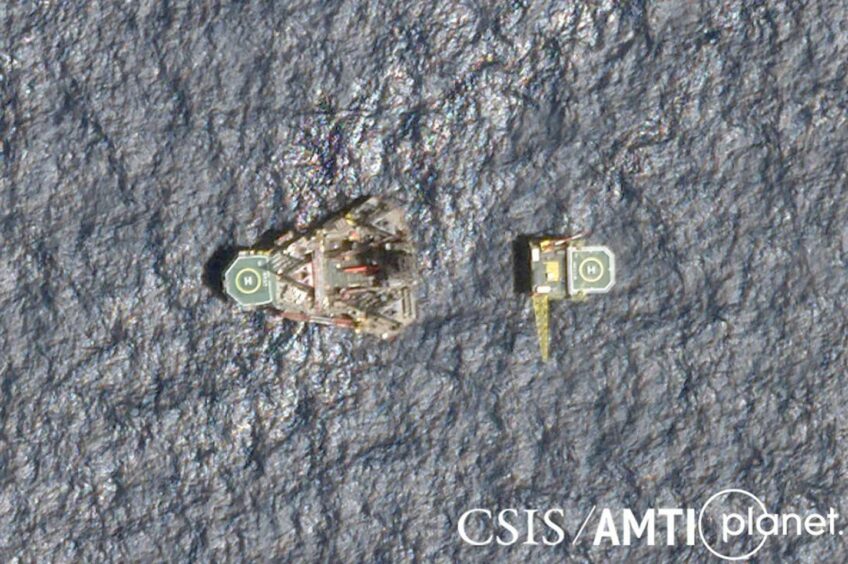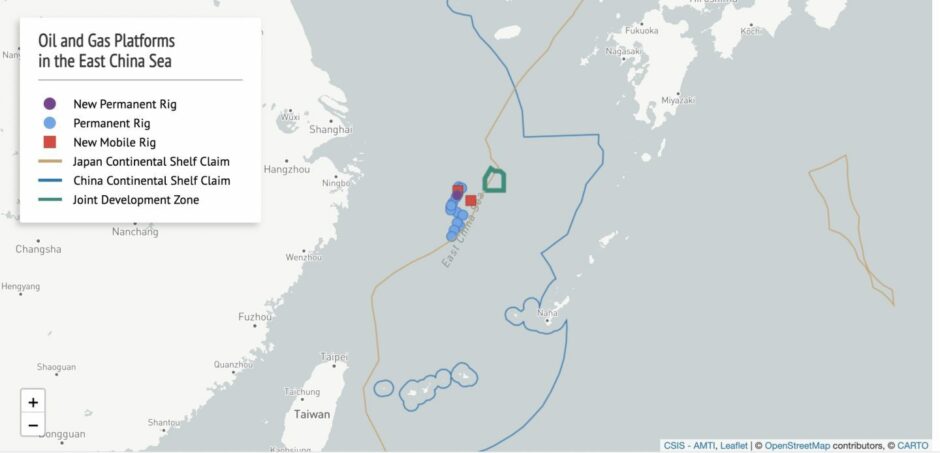
China has installed a new oil and gas production platform near the median line with Japan in the East China Sea, reported the Asia Maritime Transparency Initiative (AMTI), sparking Tokyo’s anger.
“The platform is the first new permanent platform to be installed in the area since 2015, and its construction has drawn protest from Tokyo, which believes the two countries should share the area’s hydrocarbons under international law,” said the AMTI yesterday.
The new rig was built in June, first appearing in satellite imagery from Planet Labs on June 28. Imagery from July shows a mobile jack-up rig, the Kan Tan 7, linking up with the new platform.
The platform matches the dimensions and appearance of several of China’s 12 other permanent production platforms near the median line, according to analysis from AMTI.
“The construction of a new permanent platform suggests that China is increasing its oil and gas production from fields that straddle the median line between China and Japan. Japan claims a full 200-nautical-mile exclusive economic zone (EEZ) and continental shelf in the area, but its domestic law dictates that the median line be treated as a de facto boundary when there are unresolved, overlapping claims with another country. China, meanwhile, claims a 200-nautical mile EEZ in the East China Sea and an extended continental shelf that reaches even further toward Japan,” noted AMTI.
“China has so far restricted drilling operations to its side of the median line, despite not formally recognising it. But Tokyo maintains that its activities drain oil and gas basins that straddle the line and should therefore be shared by both countries. The two governments negotiated a joint development agreement in 2008, but it has never been implemented. Instead, China from 2013 to 2015 built a dozen drilling platforms near the median line to the south of the joint development area,” added AMTI.
Alongside the stationary platforms, China also deploys mobile jack-up rigs which carry out exploratory drilling, as well as development work, at existing platforms. Of the mobile jack-up rigs AMTI last observed operating in the East China Sea in 2018, two have left, and two new rigs have entered: the Oriental Discovery and the Shanghai Zhenhua. “The mobility of these rigs means that its highly likely that other rigs have rotated in and out of the area, as well as to different positions within it, since AMTI last surveyed China’s rigs in 2018,” said AMTI.
US-based AMTI said on its website that it “aims to promote transparency in the Indo-Pacific to dissuade assertive behaviour and conflict and generate opportunities for cooperation and confidence building. Because AMTI aims to provide an objective platform for exchange, AMTI and Centre for Strategic and International Studies (CSIS) take no position on territorial or maritime claims.”

 © Supplied by AMTI
© Supplied by AMTI